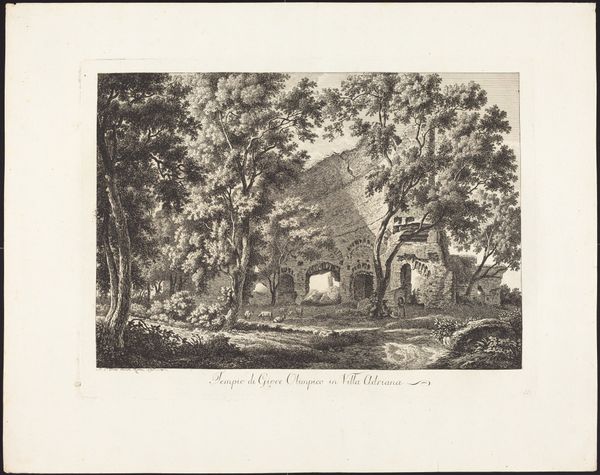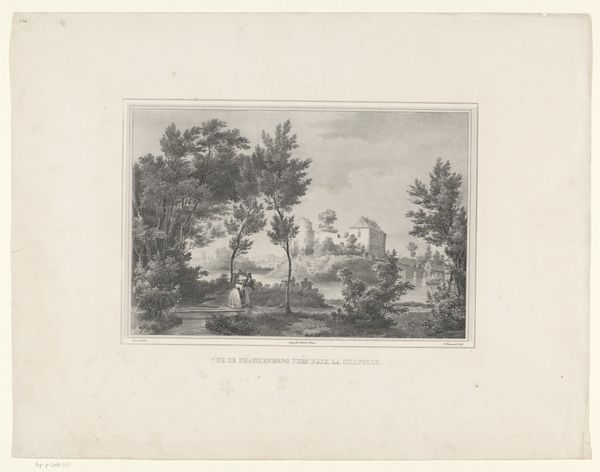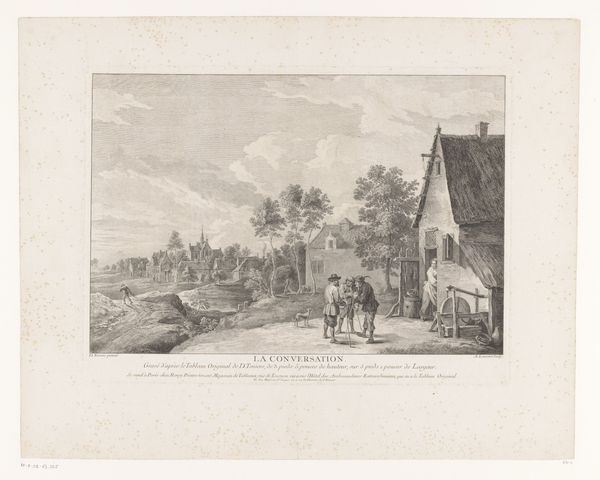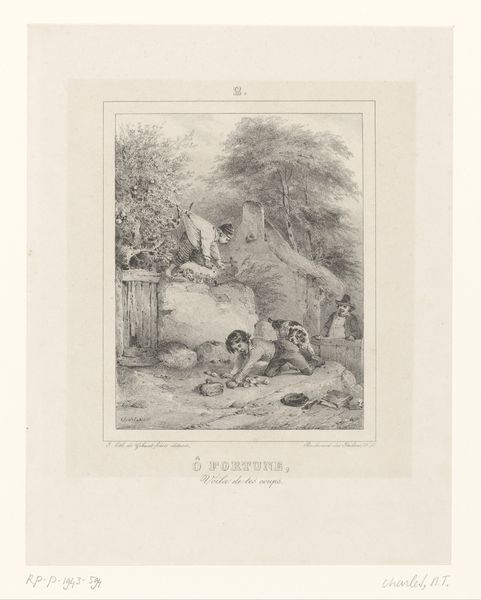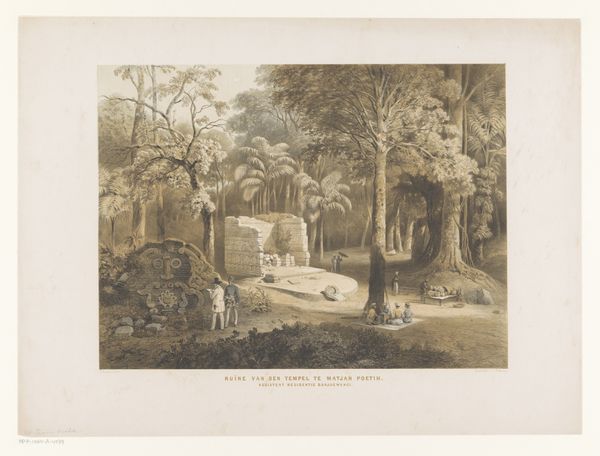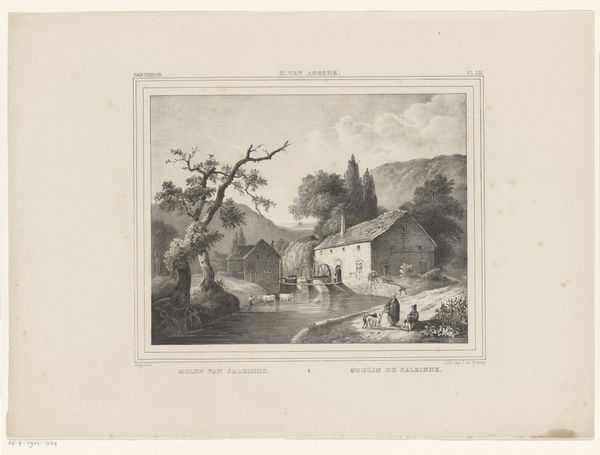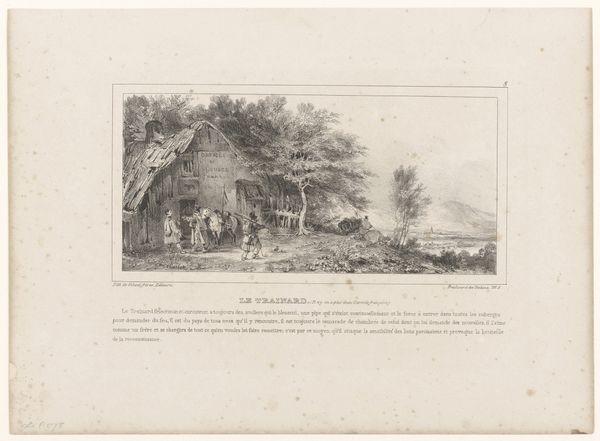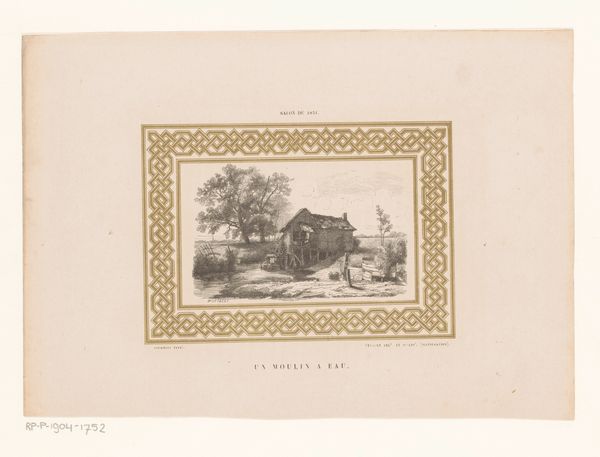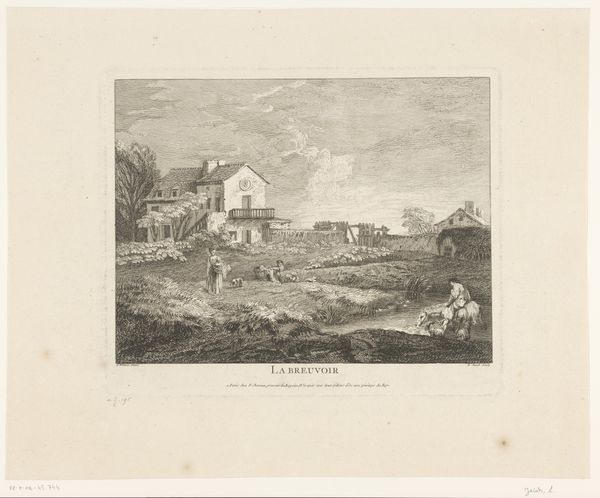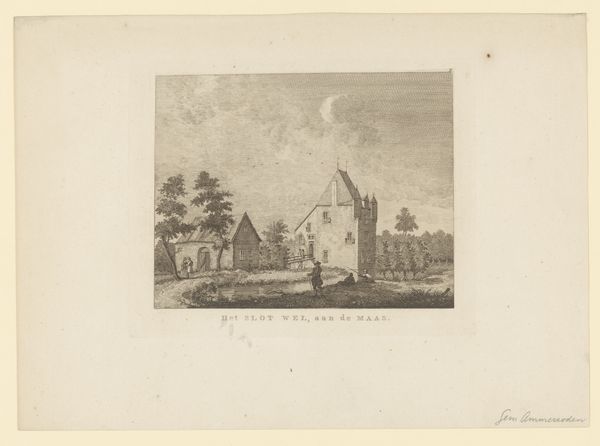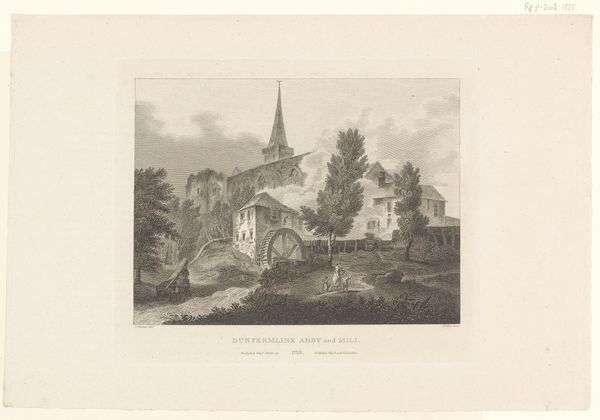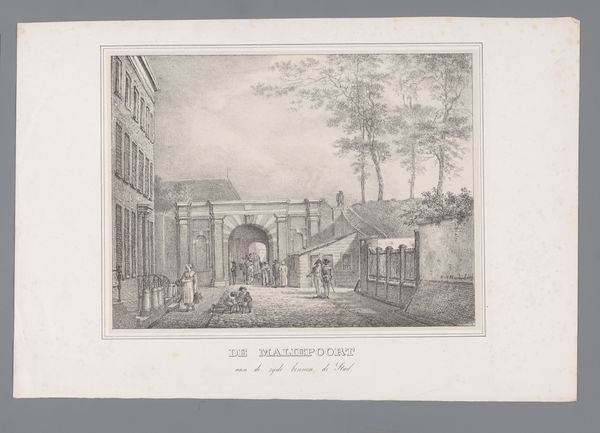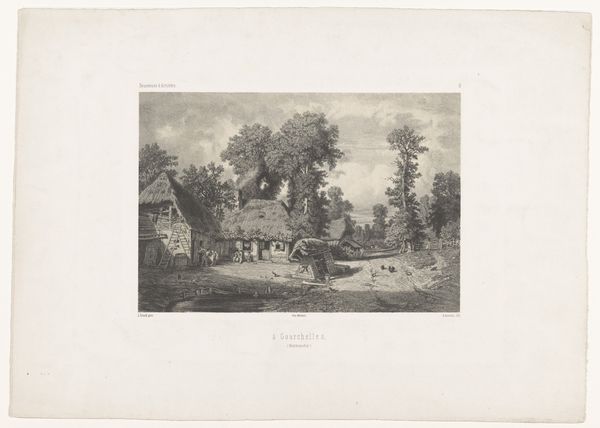
print, etching, engraving
#
pale palette
# print
#
etching
#
old engraving style
#
landscape
#
romanticism
#
cityscape
#
engraving
Dimensions: height 265 mm, width 335 mm
Copyright: Rijks Museum: Open Domain
Curator: Standing before us is Johannes Franciscus Christ's etching, "Barbarossa-ruïne in het Valkhof in Nijmegen," created sometime between 1809 and 1845. It’s currently held in the Rijksmuseum's collection. Editor: The crumbling architecture strikes me first; a skeletal presence under that serene sky. A melancholy monumentality seems to radiate from it. Curator: The printmaking process itself—the labor-intensive etching technique—lends the image a kind of weight and authenticity, doesn't it? This romantic ruin rendered in a painstaking manner, drawing attention to the materials and processes of cultural memory making. Editor: Absolutely. The crumbling Barbarossa ruin clearly acts as a memento mori, urging reflection on lost power and historical shifts through potent architectural imagery. The archways are almost like eyes, gazing blankly, embodying themes of transience and decay, but what could this be signaling at the time it was made? Curator: Well, consider that this print was produced during a time of significant social and political upheaval. The act of etching this ruin and mass producing it, allowing people to have access to it speaks to how this imagery might have served the changing roles and understanding of history in 19th century Holland. Editor: A valid point! It invites viewers to connect personally with history while prompting a bittersweet reflection on time's inevitable passage, almost transforming ruin into a cultural artifact available to all. Curator: Indeed, we often associate Romanticism with a certain valorization of ruins. Looking closer you notice how it prompts consideration of how structures like this act not just as physical remains, but material repositories for communal stories and memories. Editor: The engraving clearly transmits symbolic power. Curator: For me, it underscores that the production of such artwork involved both skilled labor and capital—making what many think of high art very grounded in the everyday realities of production. Editor: Reflecting on this, the ruined arch calls for introspection of past ages and fading grandeurs. Curator: And the etching emphasizes this contrast via painstaking reproduction.
Comments
No comments
Be the first to comment and join the conversation on the ultimate creative platform.
